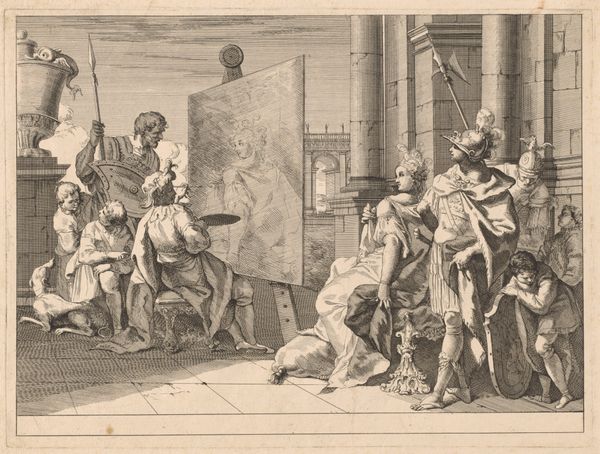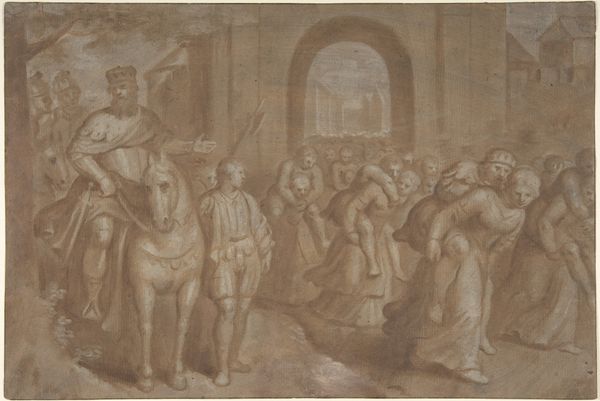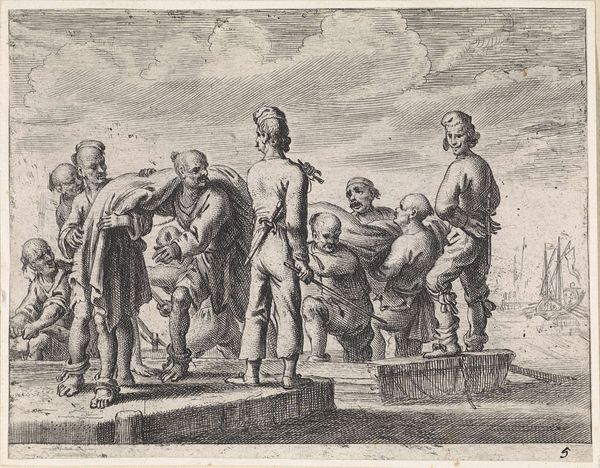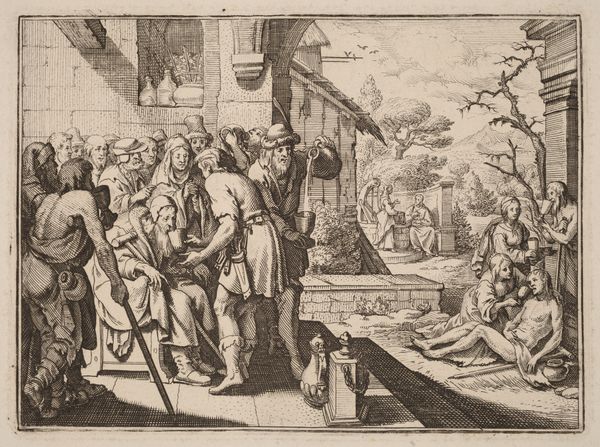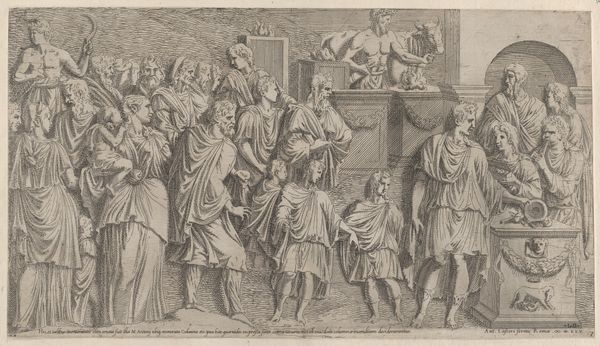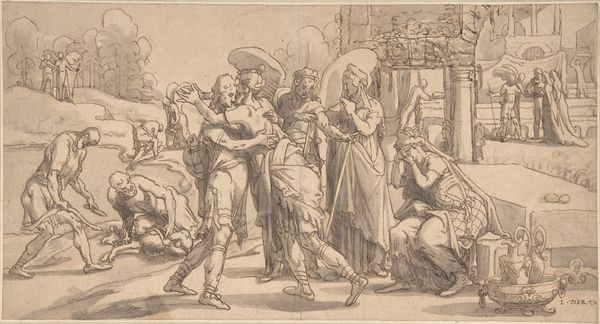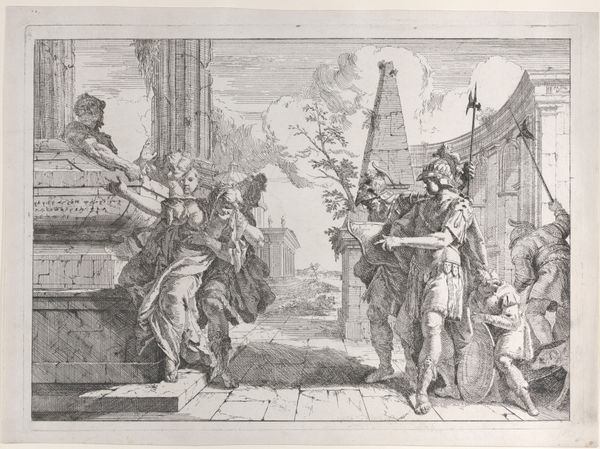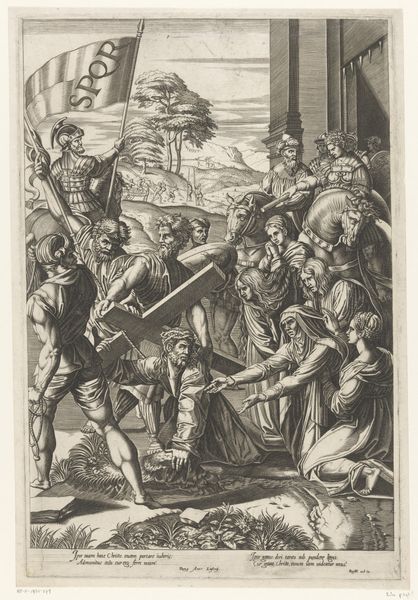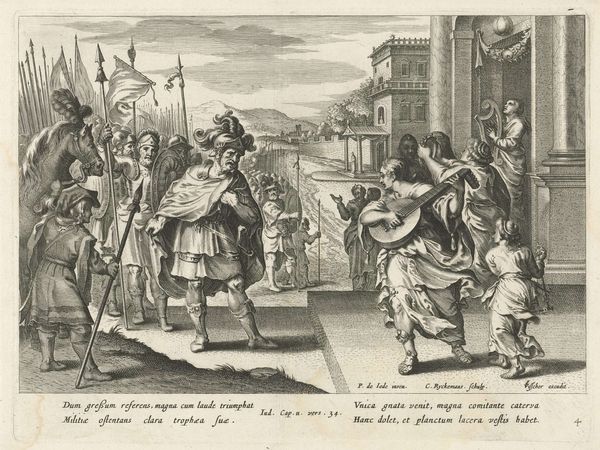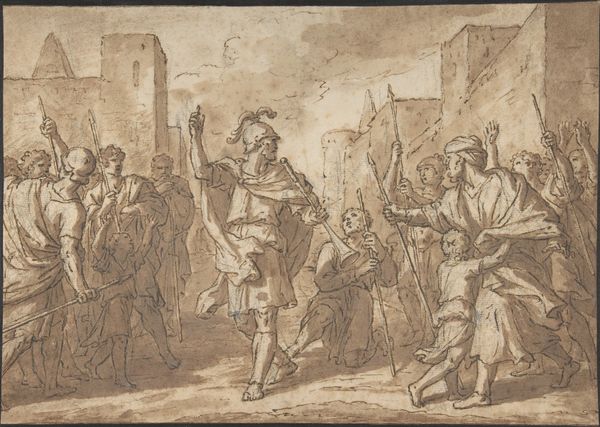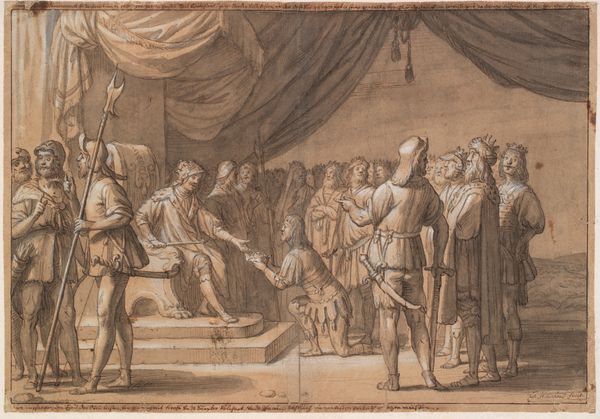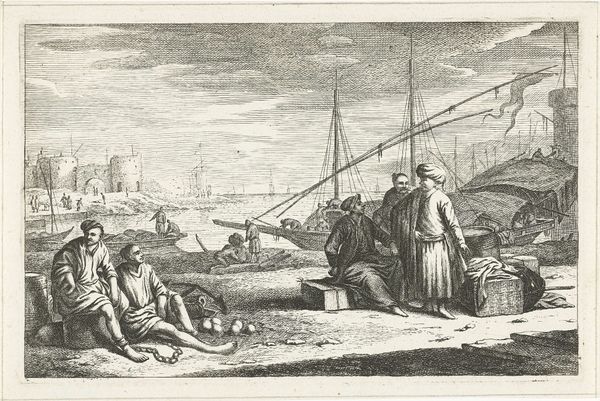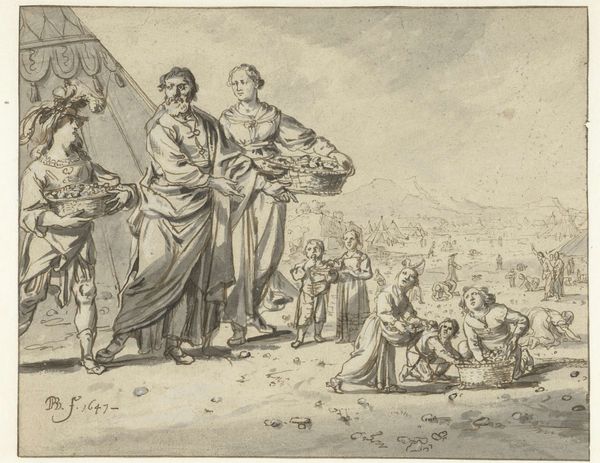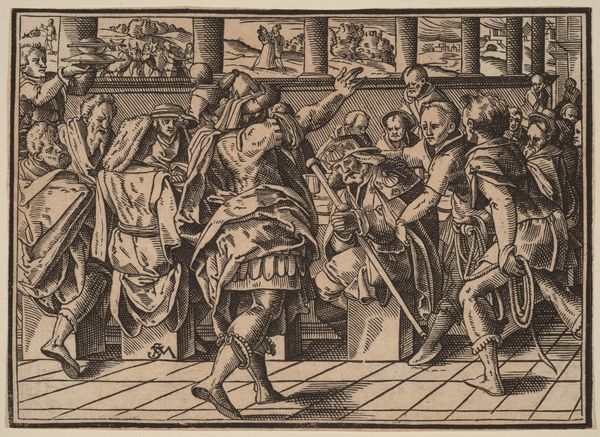
The Peace Negotiations between Julius Civilis and the Roman General Cerialis 1600 - 1613
0:00
0:00
oil-paint
#
narrative-art
#
baroque
#
oil-paint
#
landscape
#
figuration
#
oil painting
#
cityscape
#
history-painting
Dimensions: height 38 cm, width 52 cm
Copyright: Rijks Museum: Open Domain
Editor: Here we have Otto van Veen’s "The Peace Negotiations between Julius Civilis and the Roman General Cerialis", dating back to 1600-1613, painted with oils and proudly displayed in the Rijksmuseum. It strikes me as quite a curious scene, almost theatrical, and tinged with a peculiar tension. What do you make of it? Curator: Well, isn't it a charming tableau of discomfort! It's fascinating how van Veen manages to blend the grand historical narrative with…well, awkward posturing. Those figures on the bridge practically vibrate with distrust, don't they? You have Civilis flashing some cheek–quite literally—and the Roman General seemingly unimpressed. Does that inform us about diplomacy and the fine art of saving face perhaps? Editor: Yes, definitely some posturing going on! So, is the "cheek flashing" indicative of anything in particular here? Curator: Now there's a question to tickle the historian’s fancy! Van Veen painted this during the Dutch Revolt against Spanish rule; so this scene of the Batavian revolt is layered with meaning. Civilis, showing his, ahem, back, maybe a symbol of brazen defiance towards Roman authority but could be taken either way, which I love about it. What do you feel the atmospheric conditions do for that defiance in our view of the cityscape behind? Editor: Oh, I see! That historical context is really illuminating. With the smoky cityscape background you get a feel for what is at stake; how fraught the whole political situation must have been. Curator: Exactly! Art always holds the answers if we care to question what is being portrayed, the painting asks, who has power? In our reading of Otto van Veen, can the lack of full answers offer hope to be gleaned from its composition? What do you think? Editor: That's something I'll definitely consider more deeply, now! Thank you, that’s really given me a lot to think about with this piece and how power dynamics play out on canvas, that will stay with me.
Comments
rijksmuseum about 2 years ago
⋮
In 1613, the Dutch parliament (States General) commissioned Otto van Veen to paint twelve paintings depicting the revolt of the Batavians against the Romans in AD 69 and 70. These were displayed in Binnenhof, the central government building in The Hague. In the early years of the Dutch Republic, many compared their own revolt against Spain to the Batavian uprising.
Join the conversation
Join millions of artists and users on Artera today and experience the ultimate creative platform.
